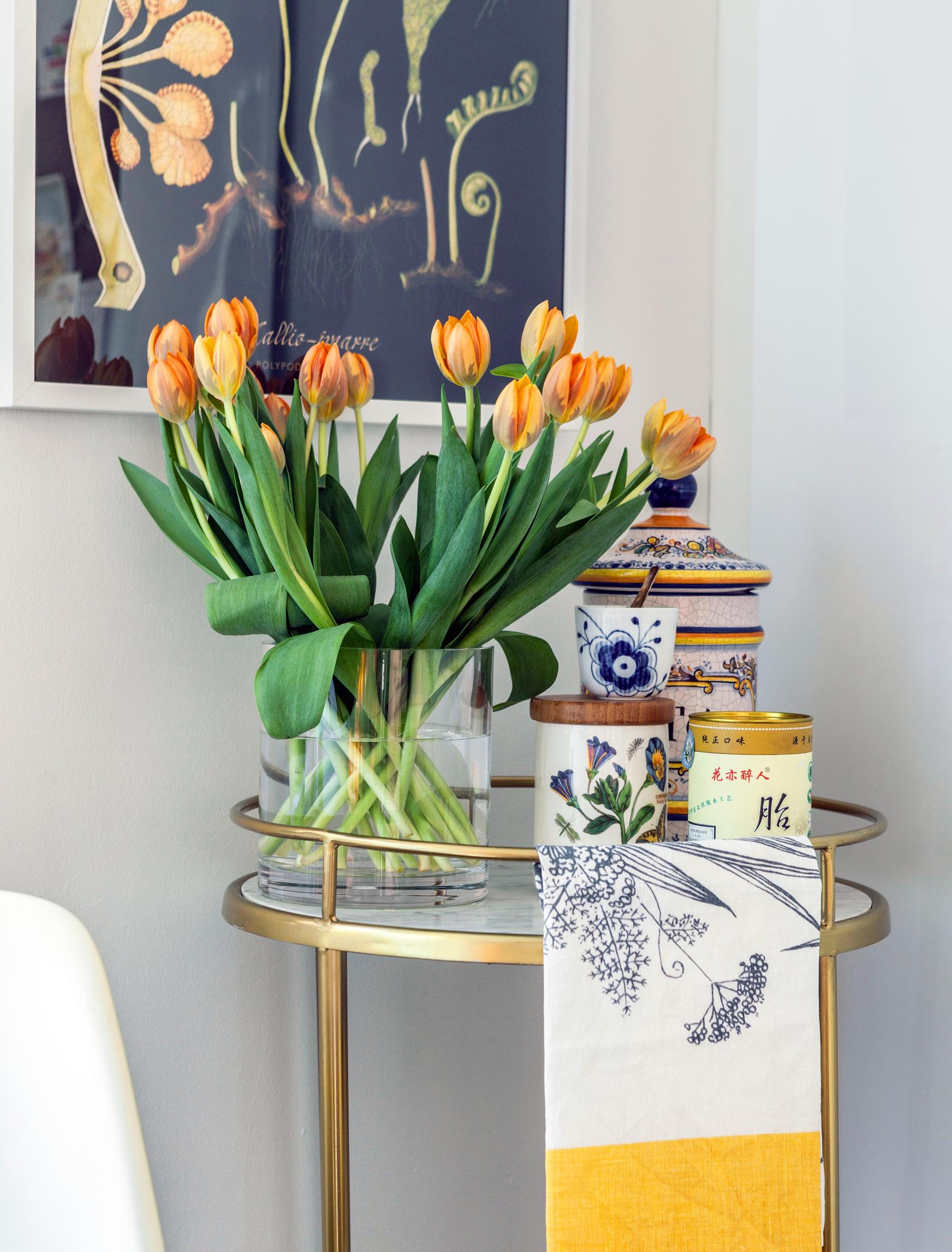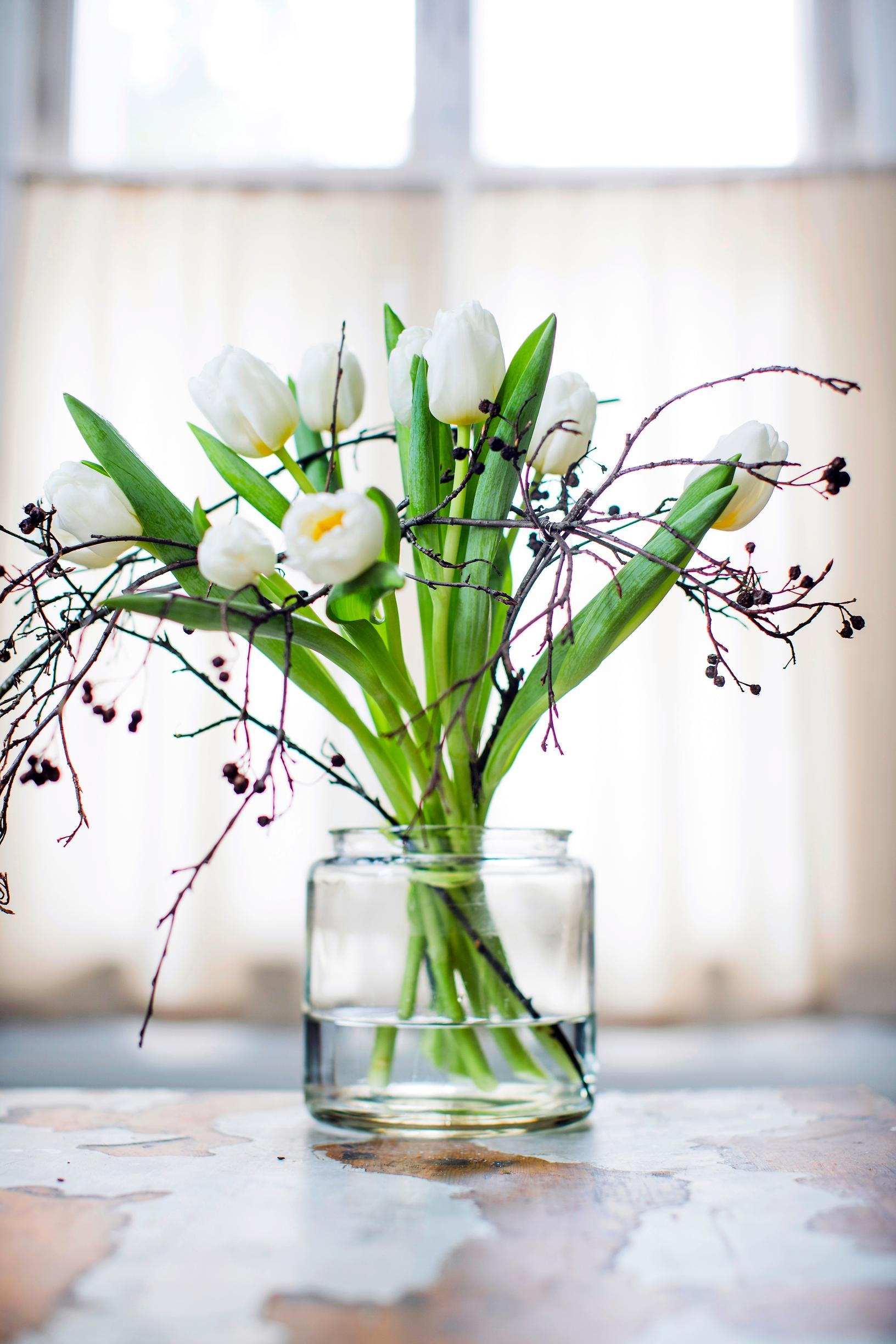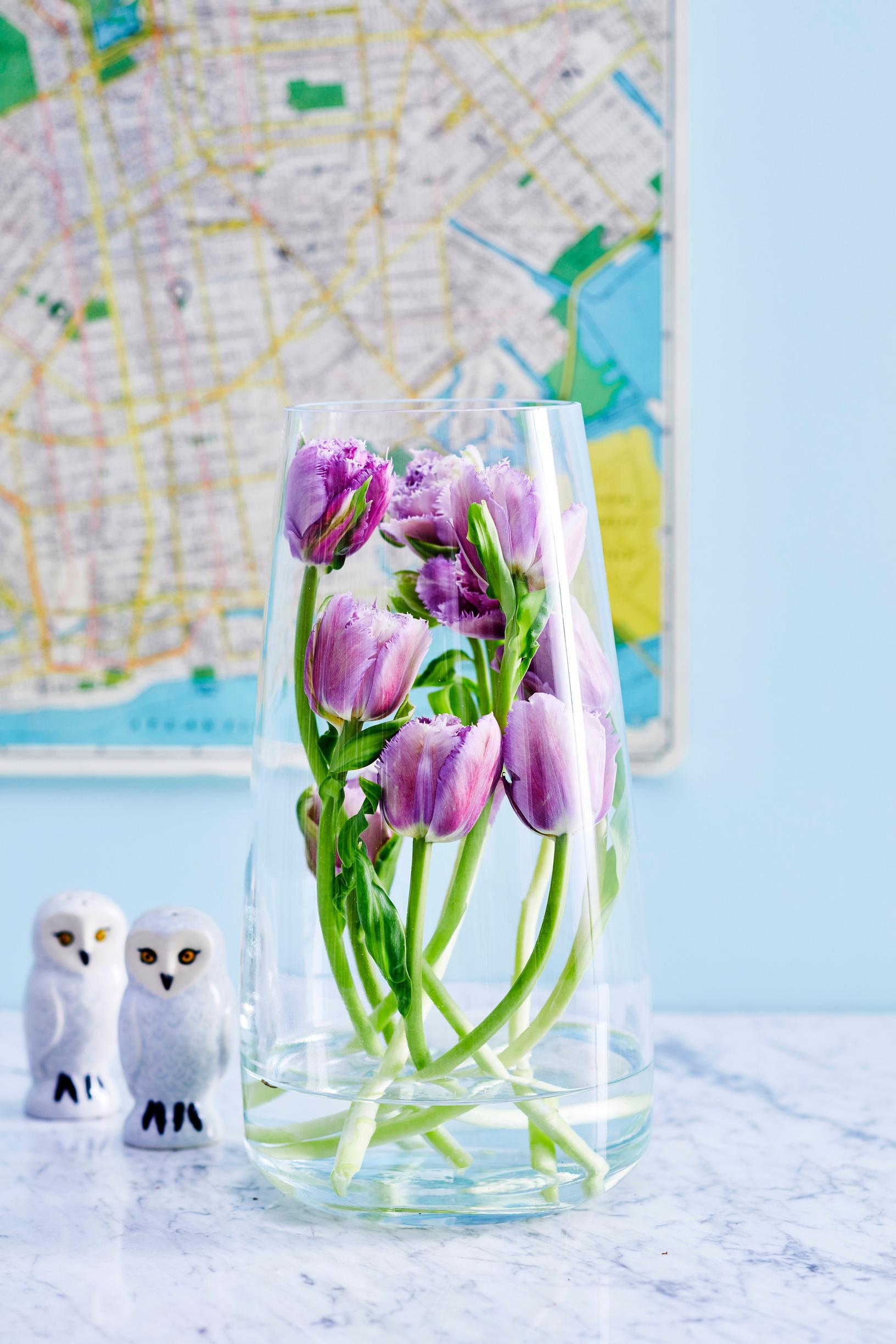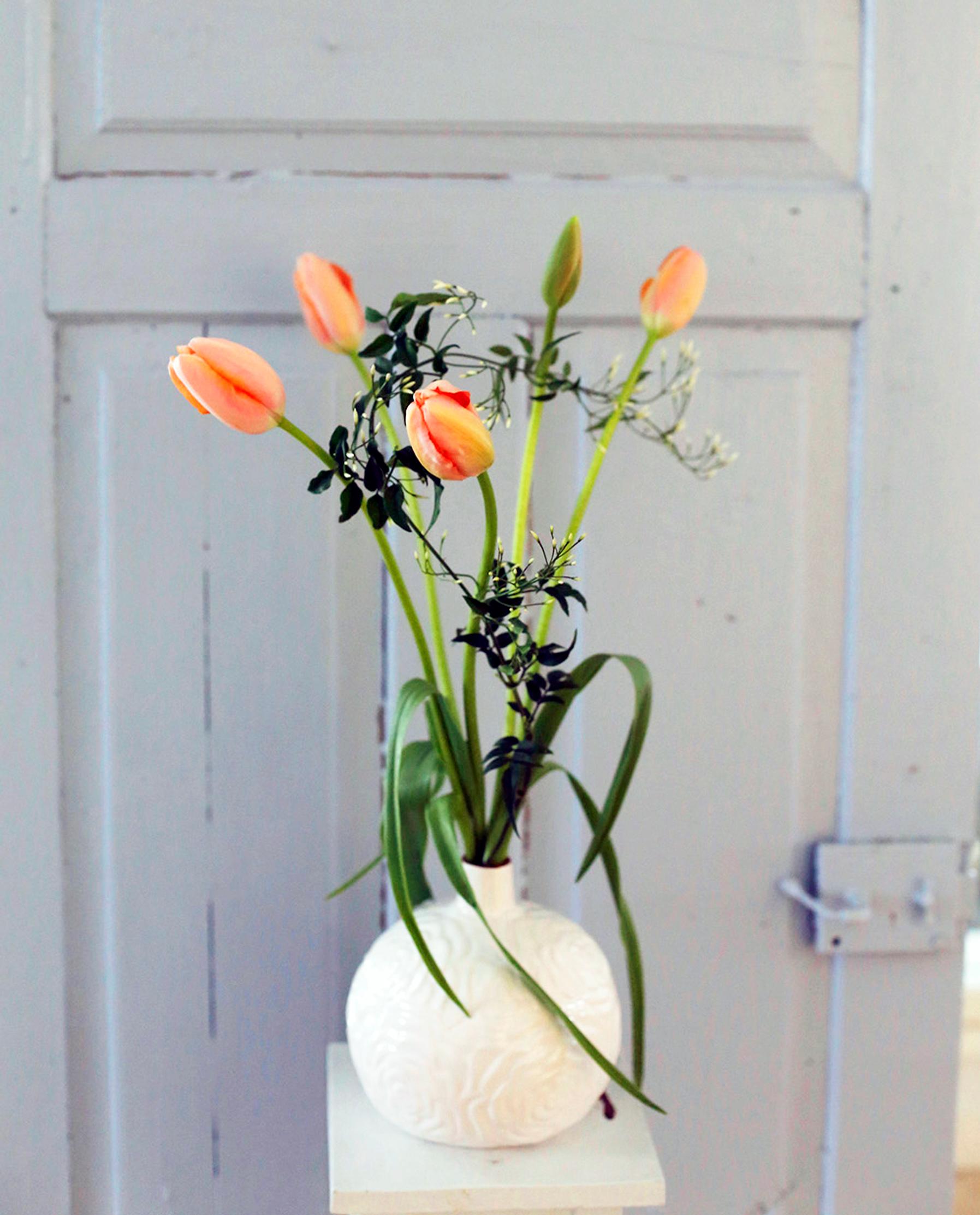
Should you put ice cubes in your tulip vase? 9 tricky questions about cut tulip care—master florist answers!
Is it possible to prevent tulip stems from stretching? Do you need to change the water daily? We’ve gathered tricky questions about caring for cut tulips—master florist Saija Sitolahti answers.
It's hard to resist the vibrant tulip bouquets sold in early spring. But how can you keep your tulips looking beautiful at home for as long as possible? Social media is full of all kinds of tips, but do tricks like adding ice cubes or coins to the vase or other hacks actually work?
We asked master florist Saija Sitolahti from Järvenpään Kukkatalo florist’s shop in Finland to answer some tricky questions about caring for cut tulips.

Bright green leaves indicate that the tulip bouquet on sale is fresh.
Tulips care
1. How can I tell if a tulip bouquet is fresh and lively?
When buying a tulip bouquet, pay attention to the color of the leaves. Fresh green leaves are a good sign. Also, make sure the flowers haven’t already grown out of their packaging while on display.
The petals of fresh tulips look vibrant as well. However, buds aren’t necessarily a sign of freshness. If the bouquet has been kept dry for too long while on sale, the buds might wilt at home before blooming. Therefore, the best method is to check how green the leaves are.
2. Sometimes tulips are sold without water. Why is that? Should I keep the bouquet dry at home as well?
Florists often receive bouquets dry from the growers. When the bouquets are moved from storage to the sales area in batches, the stems are recut, and the bouquets are placed in cold water. The water helps the tulips firm up and become more vibrant.
Tulips tolerate dryness well during transport and short-term storage. Also, when dry, the stems don’t elongate. However, it’s important to give them water at home; otherwise, they will wilt.

Tulips drink a lot of water: if you add water in the vase in the evening, by morning several centimeters may have disappeared.
3. Can tulips freeze on the way home if it’s very cold out?
Tulips are not sensitive to cold. Usually, you don’t have to worry about them freezing. Florists will pack the bouquets according to the weather.
4. What should I do when I’ve brought the bouquet home?
Trim the stems by removing one or two centimeters from the bottom with a knife. Tulips aren’t too picky, so using scissors is usually fine, too.
Don’t remove the flowers from their wrapping right away. Instead, place them in the vase while still wrapped, with cold water at the bottom, and let them sit for about half an hour. This way, the tulips will absorb water efficiently and firm up. Tulips don’t need a lot of water in the vase—it’s enough that the stem ends stay submerged.
5. It’s sometimes said that you should put ice cubes in the tulip vase. What do you think about this?
Tulips like cold water—it’s best to run the coldest possible water from the tap. The idea behind adding ice cubes is probably to keep the water cold longer. I haven’t tried it, but I don’t believe ice cubes would make a significant difference. Of course, they might look fun in the vase!
If you put tulips in really warm water, the flowers will open faster. A warm room temperature has the same effect.
Tulips don’t need flower food.
6. Do I need to change the water every day?
It’s not necessary to completely change the water. Often it’s enough to add water as needed. Tulips absorb a lot of water: if you add water to the vase in the evening, by morning several centimeters may be gone. The most important thing is to ensure that the stem ends stay submerged. If the stems dry out, you should cut a new absorption point. If the water starts to look cloudy, you should replace it entirely.

7. People share all kind of tricks related to caring for tulips. Some people add copper coins to the water, others sugar, and some even vinegar. Someone might even splash in vodka! Do these kinds of “additives” help?
Apparently, the idea is that these methods could reduce bacteria in the water. I don’t believe these tricks are significantly beneficial. Flower food has been developed for the same purpose—but even that isn’t used for tulips. The water in the vase stays good for a long time. If it becomes cloudy, you should change it.
8. Tulip stems quickly stretch and become lanky at home. Can you prevent this?
You can’t really prevent it. Some varieties grow faster than others. You can slow down the stretching by keeping the flowers in a cool place at least overnight.
One good method is to cut the tulips quite short immediately after bringing them home, which gives them room to grow. On the other hand, tulips look quite nice with long, curved stems! As the tulips grow, you can move them to a different vase—in a tall and narrow vase, the length of the stems isn’t a problem.
A sunny windowsill isn’t the best place for a tulip bouquet.


9. It’s recommended that you move tulips to a cool place overnight. Where exactly—in the fridge?
Well, if there’s room in the fridge, that’s a great place! However, make sure the tulips don’t touch any food. Personally, I often put the tulips in the entryway overnight; it’s cooler there than in the rest of the house. The terrace or balcony is also a good place if it’s not freezing.
Storing tulips in a cool place prolongs their lifespan. For the same reason, a sunny, warm windowsill isn’t the best spot for a tulip bouquet.


